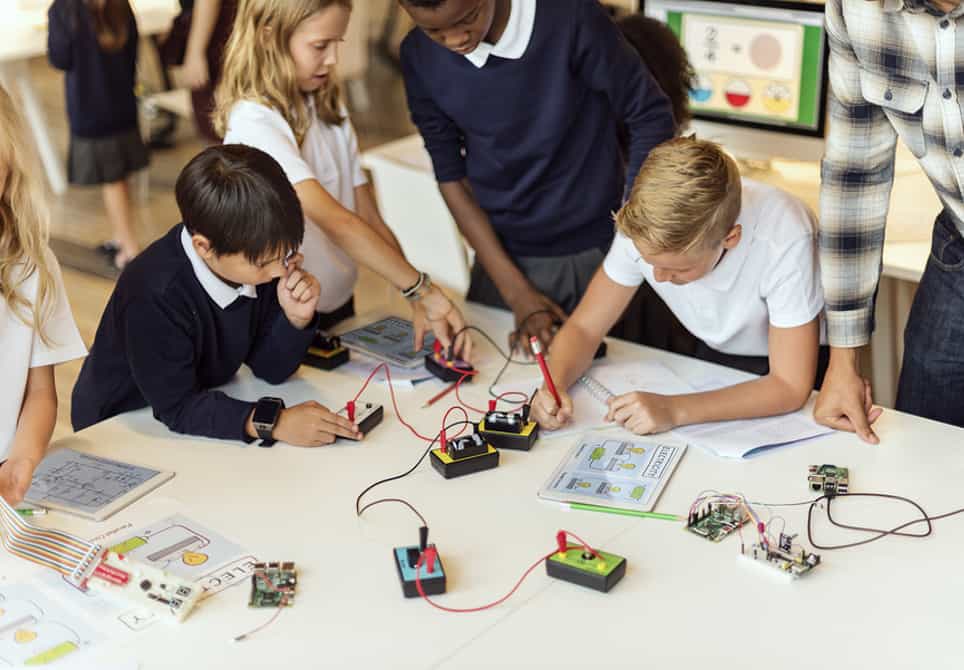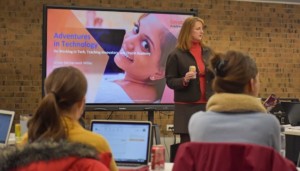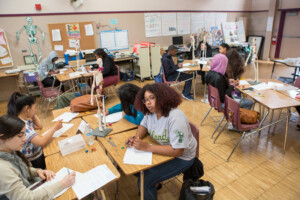STEM And Making In Education Is Growing

By TJ McCue
This blog was originally posted on Forbes.com.
STEM education is an important aspect of how we remain competitive as a nation. Last year, President Obama announced over $240 Million in new STEM commitments during the 2015 White House Science Fair.
It was part of a much larger initiative from the “Educate to Innovate” campaign that has over $1 billion in financial and in-kind support for STEM programs. The administration’s attention on makers and making is part of the national movement kicked off by Make magazine and its founder Dale Dougherty.
Despite a desire for there to be more commitment, financial and otherwise, to supporting science, technology, engineering and math (STEM) in the USA, there is actually quite a bit. You can read the full White House factsheet here–filled with 10-plus pages of STEM goodness.
The White House Office of Science and Technology has within it a team of makers, which is quite inspiring. Did you know that there is a National Week of Making coming up the week of June 17 through June 23? President Obama is arguably our most STEM-focused president. Six years ago, he made history by hosting the first-ever White House Science Fair. In April, he hosted the 6th and final one of his administration.
The National Week of Making will coincide with the National Maker Faire on June 18-19 in Washington, D.C., that features makers from across the country and will include participation of numerous Federal Agencies such as the Department of Education, Small Business Administration, Department of Commerce, National Aeronautics and Space Administration, and the Smithsonian Hirshhorn Museum and Sculpture Garden, to name just a few. Making is not technically under the Department of Education and potentially not considered STEM by some purists, but I would argue that it is completely enabling STEM/STEAM growth.
Why all the focus on STEM? It is about current and future job needs from a high-level government perspective, about being competitive as a nation. The U.S. Department of Education has a recent and important chart that shows projected STEM Job increases from 2010 to 2020. All occupations is the lowest bar at 14 percent. Mathematics jobs 16 percent is the next higher bar, climbing to 62 percent for biomedical engineers. You can check it out here.
More so, the STEM focus is increasingly on what Greg Watts, dean of the College of Visual Arts and Design at the University of North Texas, puts forth in his STEM to STEAM post: That we need to drop the idea two different parts of the brain and “celebrate the so-called differences–it’s not ‘left brain’ or ‘right brain,’ it’s THE brain.”
In my work around 3D technologies, I am often in conversation with thought leaders around the USA and Canada about what it takes to build more awareness, improve or jumpstart various aspects of new technologies (such as 3D printing or 3D scanning) and in my mind, that falls into a STEAM education bucket.
I regularly read a blog from Getting Smart, a learning design firm based in Seattle, where I was studying posts from Carri Schneider, Director of Knowledge Design at the firm. I reached out to interview her and we talked about how technology was making its way into classrooms, but we spent a lot of time talking about changes in education and I like the way she explains the term STEM:
“We use either STEAM or Learner-Centered STEM. STEM/STEAM Learning that is personalized, project-based, competency-based, gives students more autonomy; that is what really gets me excited about the future of learning for kids. It’s one thing to have thousands/millions more kids who get access to STEAM. It’s another thing entirely for every kid to have deep, meaningful STEAM learning with all the tools that now exist to make that possible at scale.”
The National Week of Making and the White House Maker Faire are examples of Learner-Centered STEM, of putting the child–the learner–at the center of various education initiatives. There are many people and organizations, including President Obama, who simply want to see STEM/STEAM education get the funds and attention it deserves. 2015’s $1 billion was a good start. Let’s hope that number doubles, triples so that every child will realize his or her full potential, as a maker, as a person.
Final Notes: As most of my readers know, I am active in the maker, 3D and STEM worlds. I have been working on several posts compiling STEM resources for teachers, students and the hacker/maker looking for ways to add new projects to their shops. You can check those STEM resources on my GoExplore3D blog.
This Forbes post title was inspired by “Every Student is a STEM Student” by Getting Smart contributor Elaine Menardi. You can read her post here. Some educators and others in Colorado have slightly changed the “definition” of STEM to Science, Technology, Entrepreneurship, and Mastery which is part of a bigger conversation around changing education at the upcoming conference called edOS: A New Operating System for Education on June 4 in Denver.
For more, see:
- Every Student is a STEM Student
- 18 Ways to Power Learner-Centered STEM Partnerships
- Redesign Schools with Learner-Centered STEM
TJ McCue is a tech writer, content strategy consultant and produces web content. Follow him on Twitter: @TJMcCue.
Stay in-the-know with all things EdTech and innovations in learning by signing up to receive the weekly Smart Update.





TechyKids Canada
Very informative post and would help many to understand the importance of STEM learning for kids. Thanks for sharing and explaining it so well!